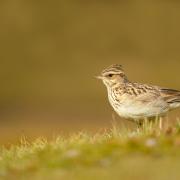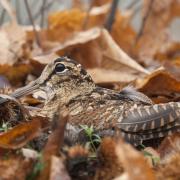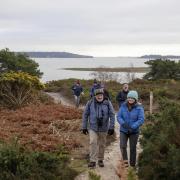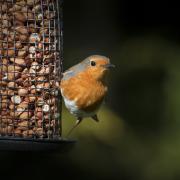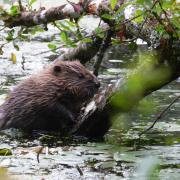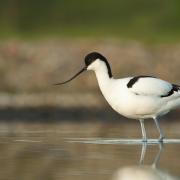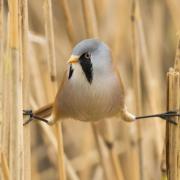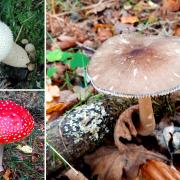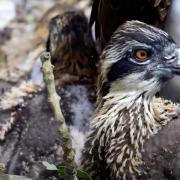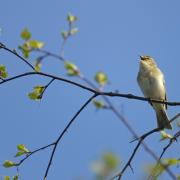The resurgence of interest in growing local cider apples has seen the reinstating of traditional orchards across the county which in turn is providing a valuable year round haven for wildlife

Mature cider orchards have been a part of the traditional Dorset landscape for centuries. Back in 1796, Dorset had 10,000 acres of cider apple orchards, but these fell into decline over the next 200 years. Since the 1950s for example, over 60% of England’s orchards have disappeared. Recently, there has been a huge resurgence of interest in traditional local cider apples, and across the county new orchards have been planted to supply Dorset’s burgeoning cider industry. As orchards are now a UK BAP (Biodiversity Action Plan) priority habitat it is encouraging to hear about community orchards such as the Bridport Community Orchard, which is reinstating an orchard rich in species, which will develop its biodiversity as the years go by.

Orchards, and the production of apples, need to have trees at different stages of development to ensure the continuity of a good harvest. This is ideal for wildlife as some creatures require young trees for their survival whereas others need older and more gnarled specimens.
These orchards are hotspots of biodiversity, supporting a wide variety of wildlife with their mix of trees, grassland, hedges and standing or fallen dead wood. But to maintain this diversity it is important to avoid the use of pesticides and fertilisers.
One aspect of agriculture which has been extremely advantageous to wildlife is the development of orchards. In many ways, orchards are even more suited to wildlife
than woodland because by the very nature of these plantations more light reaches the ground than in a broad leaved canopy, thus allowing wild flowers to thrive.
During spring many orchards explode in a riot of colour as primrose, dandelion, lady’s smock and bluebell burst into flower before the fruit trees are in full leaf. Often, these native wild plants coincide with the blossoms of cultivated fruit trees. The apple blossom along with the wildflowers that often accompany these traditional orchards, make a great source of pollen and nectar for bumblebees, butterflies and other insects which in turn attracts insectivorous birds like tits and warblers including chiff-chaff and blackcap. Traditional orchards are particularly important for invertebrates as fruit trees are comparatively short-lived for hardwood species and produce veteran tree characteristics relatively quickly. Features such as hollow trunks, rot holes and split bark are invaluable for invertebrates and in conjunction with the wide spacing of trees makes this habitat more like a luxury home for insects. Ladybirds, which are very important as natural predators of aphids, overwinter under loose bark and the red-belted clearwing moth lays its eggs in bark crevices.
Lichens are very slow growing so the greatest diversity occurs where there are stable conditions for long periods of time. Lichens are made up of two or more different organisms living together, a fungus and an alga. Almost all fruit trees, even young ones, have lichens on their bark. Lichens are very sensitive to air pollution, particularly sulphur dioxide, and only a few species are able to survive in areas of high pollution, so they act as indicators of air quality. The most sensitive lichens to air pollution are shrubby and leafy while the most tolerant are mainly crusty in appearance. Orchards containing older fruit trees can be very rich in wildlife. I remember photographing wildlife in an old run down orchard near Mangerton in west Dorset. The apple trees had not been managed for many years, and some were standing dead wood. From a fruit growers perspective this would have been a sorry sight, but for wildlife it was an absolute haven. During one spring we discovered that green woodpeckers, blue tits and little owls were all nesting in the same small stand of ancient apple trees. Green woodpeckers are often associated with apple orchards as they tend to prefer chiselling out their nest holes in mature apple trees. This is somewhat puzzling as apple wood is so dense.
In the autumn, as fruit ripens, wild creatures visit orchards to feast on the windfalls. Where fallen fruit is not harvested it attracts winter thrushes during the colder months. Redwings and fieldfares as well as native blackbirds and song thrushes all relish the over-ripe fruit. Mammals such as roe deer, badgers and foxes will also take advantage of fallen fruit. Bats use holes in old trees as summer roosting sites. It is not only the fruit trees of these man-made habitats which are so important to wildlife, it is also the hedgerow habitat which protects the orchard. Hedgerows, especially ancient ones are the real life line for native wildlife because they resemble the woodland edge habitat. The edges of woodland support the most diverse range of species because it receives most light. Hedges are also the main highway for small mammals, add this to the mix of blossoms, wild flowers and fallen fruit then we have the perfect habitat for creatures such as bank and field voles, wood mice and dormice, which in turn attracts the attention of owls after dark.
About Colin Varndell
Colin is an award-winning wildlife photographer based in west Dorset. His evocative images of Dorset’s animals, birds, insects, wild flowers and landscapes regularly feature nationally and internationally in books, magazines, calendars and newspapers. Colin also runs wildlife photogrpahy days and workshops. For more details about his workshops visit colinvarndell.co.uk








